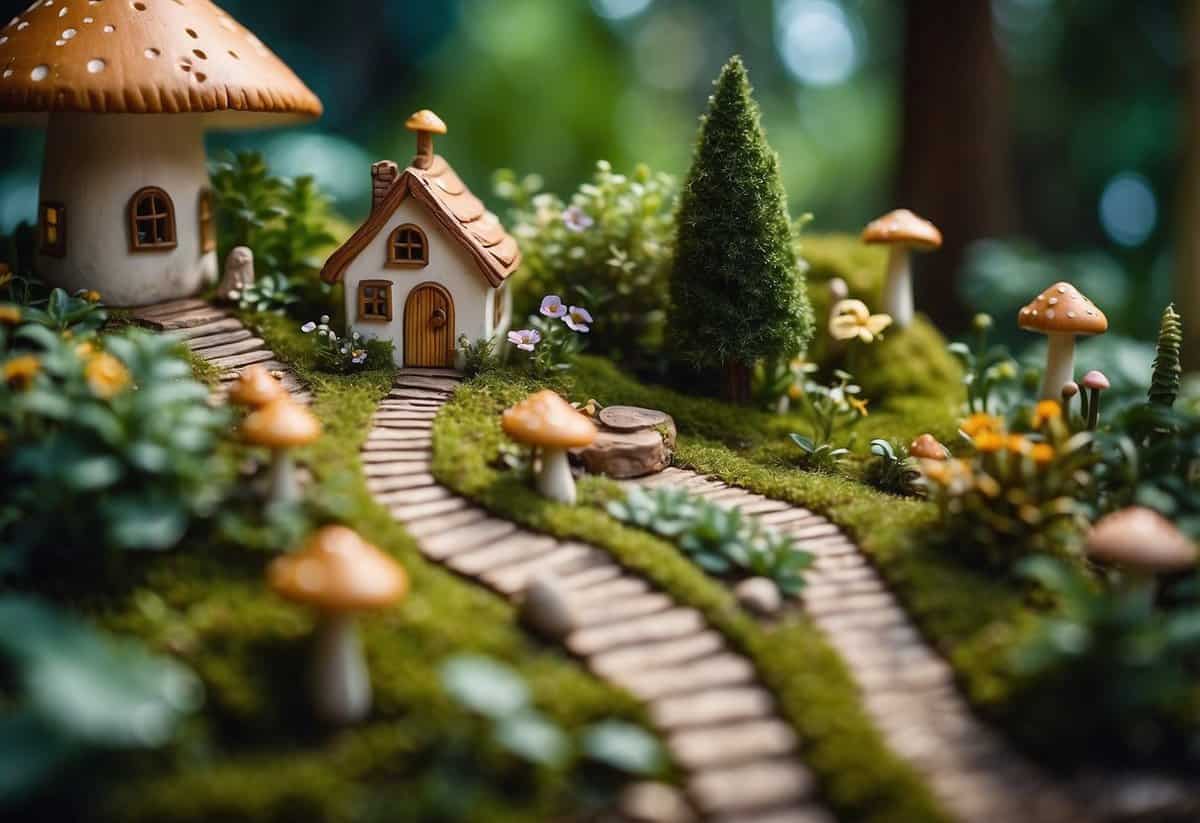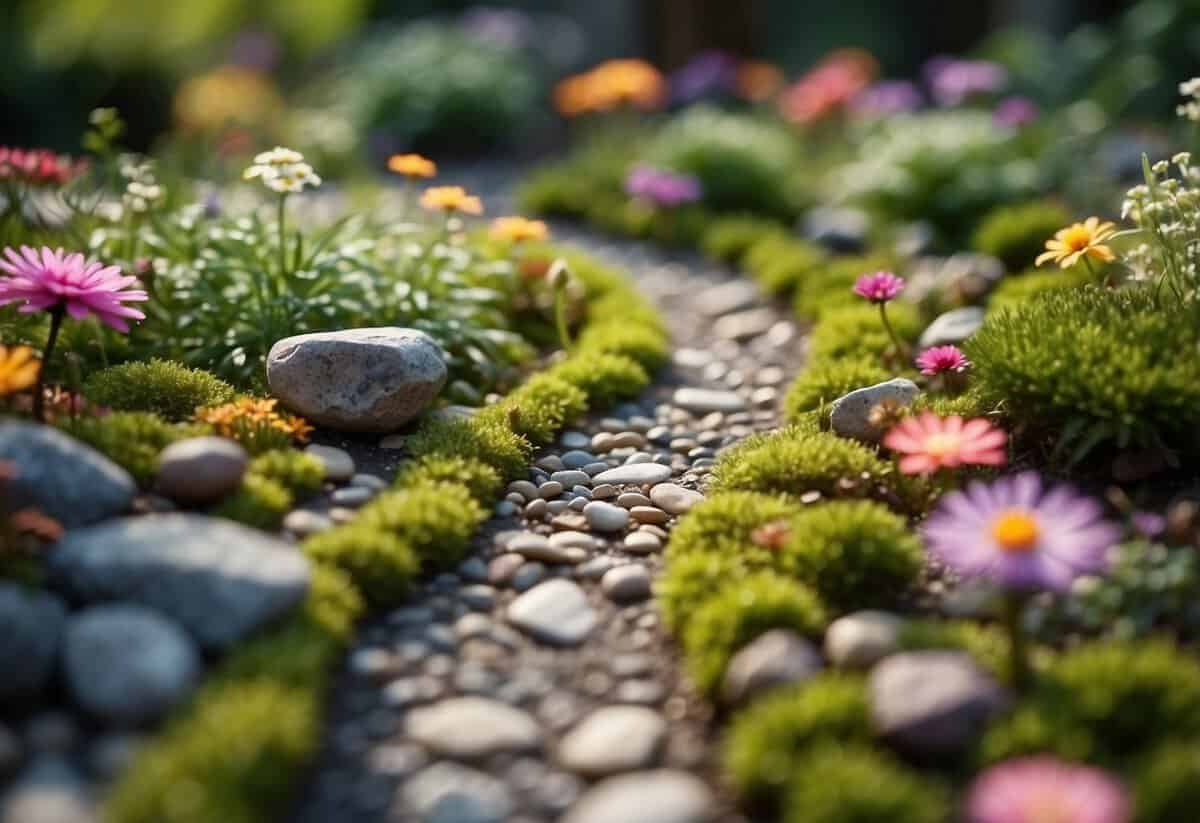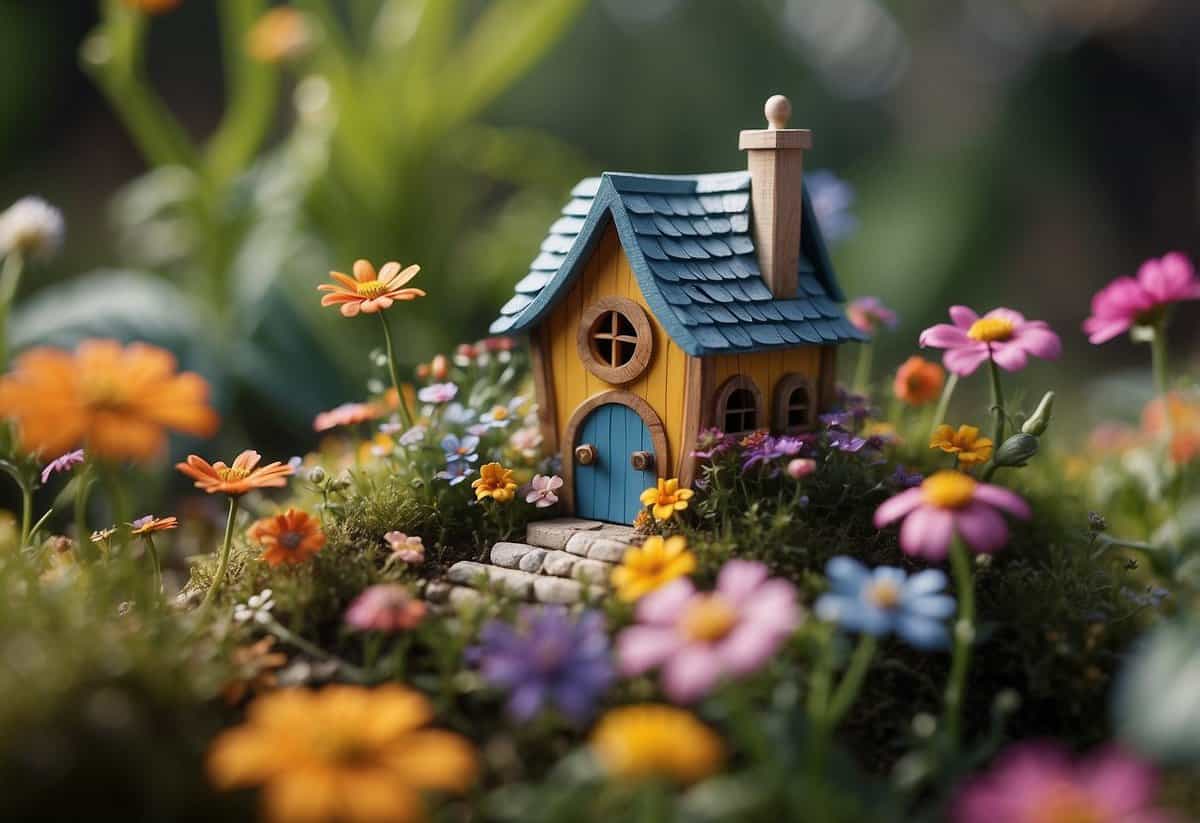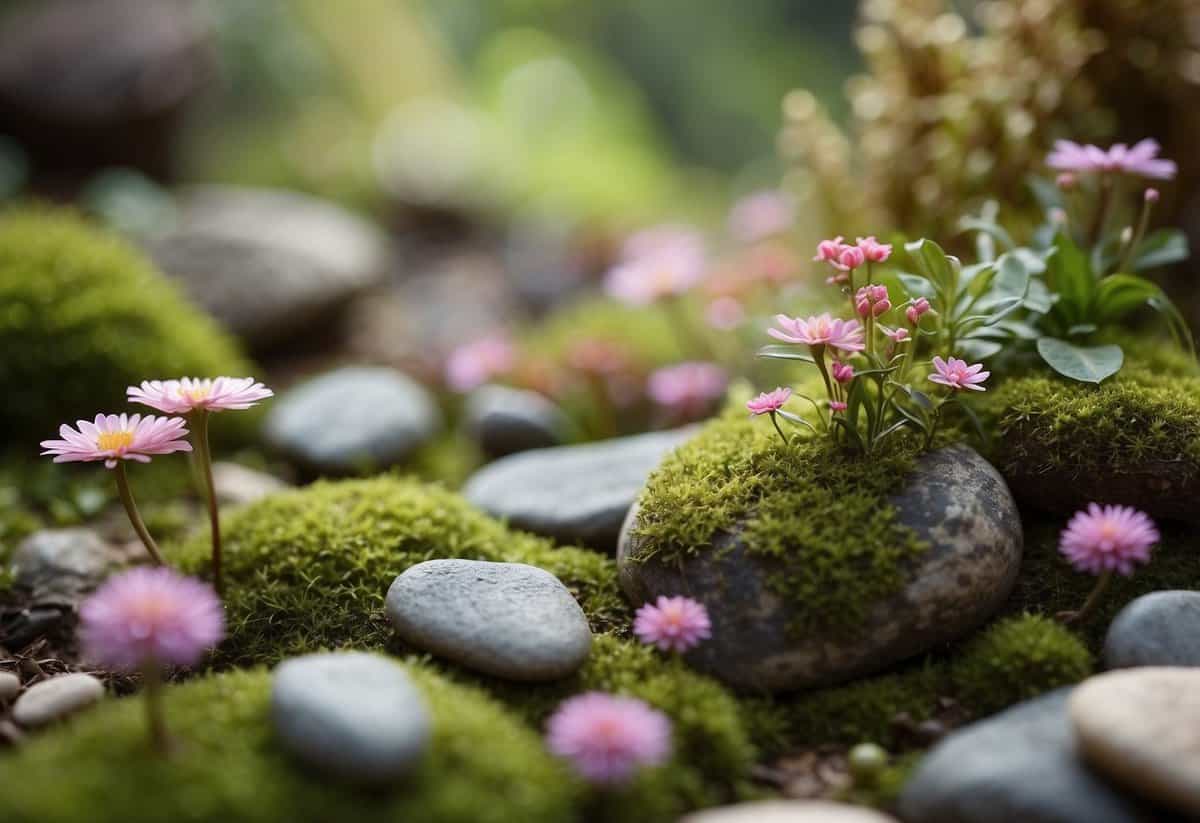Fairy Garden Tips: Create a Magical Miniature World
Creating a fairy garden can be a delightful way to bring a touch of magic to your outdoor space. These charming miniature worlds offer endless opportunities for creativity and can transform even the smallest garden area into an enchanting retreat.

If you’re looking for ways to make your fairy garden stand out, you’ve come to the right place. Whether you’re a seasoned gardener or a beginner, there are plenty of tips and tricks that will help your fairy garden thrive and captivate all who see it.
1) Choose a Miniature Theme

Picking a theme for your fairy garden is the first big step. Think about what kind of tiny world you want to create.
Maybe you love storybooks and want an enchanted forest with moss and tiny fairy doors. Or perhaps a beach scene with miniature umbrellas and sand.
Themes can come from favorite books, like Alice in Wonderland.
2) Select Hardy Plants

When choosing plants for your fairy garden, focus on ones that can thrive in various conditions. Sedum is a great choice, known for its beauty and ability to thrive in both sun and shade.
Coleus is another excellent option as it adds color with its vibrant leaves and works well in borders and pots.
Perennials like ferns and moss not only add a magical touch but also require little maintenance. Using plants like these ensures your fairy garden stays lush and vibrant throughout the year.
3) Incorporate Small Figurines

Adding small figurines to your fairy garden brings it to life. You can use fairies, woodland creatures, or even tiny gnomes.
Place them near plants or small houses to create charming scenes. You might consider miniature animals or tiny chairs to make your garden more enchanting.
Arrange your figurines thoughtfully to create a magical, whimsical atmosphere.
4) Create Paths with Gravel

Creating paths with gravel adds a charming touch to your fairy garden. You can use pea gravel or colored aquarium gravel for a unique look.
Gravel paths are easy to make and maintain. Just lay down a base layer of landscape fabric to prevent weeds, then spread the gravel.
Add some larger stones for variation. This way, your garden paths will look more interesting and inviting for your fairy visitors.
5) Use Natural Materials

Using natural materials can make your fairy garden look more charming and authentic. Gather twigs to create small fences or tiny ladders. Pine cones can be used as tiny trees or decorations. Use leaves and moss to create soft, leafy floors.
Stones or pebbles can help form paths or borders. Try adding seashells for a whimsical touch. Natural elements not only look great but also blend perfectly with the outdoor environment.
For even more ideas, check out these fairy garden tips for a magical experience.
6) Add Water Features

Water features can bring magic to your fairy garden. Ponds, streams, and fountains add a soothing sound and visual appeal.
Use foam board, cement, and stones to create a pond. Fill it with resin for a realistic water look.
Place the water feature in a shaded area to prevent algae growth and avoid direct sunlight. This keeps your garden clean and beautiful. For more ideas, check out this guide.
7) Install Fairy Lights

Fairy lights can make your garden feel magical. Start by planning where you want the lights. You can wrap them around trees, hang them on fences, or drape them over bushes.
Make sure to choose weatherproof lights if they will be outside. Read more tips on how to hang fairy lights to ensure they stay secure and look great.
8) Include Tiny Furniture

Adding tiny furniture makes your fairy garden charming and detailed. Look for miniature chairs, tables, benches, and even swings to create cozy spots for your fairies.
Place these pieces around your garden to create small gathering areas. You can find detailed plaster furniture here.
Consider using different materials like wood, metal, or ceramic for variety. This helps make your fairy garden more inviting and visually interesting.
9) Plant Low-Growing Flowers

Low-growing flowers add charm and color to your fairy garden without taking up too much space.
Consider planting Coleus which comes in shades of yellow, red, and lime. They’re perfect for borders and pots.
Another great choice is the Golden Japanese Stonecrop. It creates a bright, carpet-like cover and enjoys gentle sun.
Don’t forget about the vibrant Toucan Tango. Its orange blooms bring a pop of color and are easy to maintain with some trimming.
10) Mix Different Textures

Adding different textures to your fairy garden keeps it interesting and realistic. For example, combine rocks, moss, and wood chips.
Using plants like ferns and creeping thyme helps create a soft, lush ground cover. These choices can make your garden feel more natural.
Including fairy-sized furniture can add a whimsical touch. Fairy doors or tiny benches are great options.
Creating Your Fairy Garden

Creating a fairy garden involves selecting the right spot, choosing a suitable container, and gathering the necessary tools and materials. Each step plays a crucial role in bringing your miniature world to life.
Choosing the Perfect Spot
Finding the right location is the first step. Whether indoors or outdoors, a spot with adequate sunlight is vital. Ensure the area is protected from harsh weather if outside. An ideal location offers a mix of sunlight and shade, helping your plants thrive. Shady corners can benefit from plants like ferns and moss, which create a lush look. For example, use creeping thyme for ground cover in sunny spots. Remember, the setting also affects the overall mood and growth of your garden.
Selecting a Container
The container you choose depends on where you plan to place your fairy garden. Containers with good drainage help keep your plants healthy. Types of containers:
- Terracotta pots
- Wooden boxes
- Repurposed items like teacups or baskets
Make sure the container fits the garden’s size and theme. A larger pot allows more room for decorations and plants. Drill drainage holes if needed to prevent waterlogging.
Essential Tools and Materials
You’ll need several tools and materials to get started. Basic tools include:
- Small trowel
- Scissors or pruners
- Gloves
Materials to gather:
- Potting soil: Provides nutrients for your plants.
- Miniature accessories: Items such as fairy houses, tiny furniture, and pebbles.
- Plants: Choose small, easy-to-maintain plants like succulents, moss, or small flowers.
These essentials help create a beautiful and functional fairy garden. Prioritize items based on your garden’s theme and the space available.
By carefully selecting each element, you’ll create a magical, thriving environment for your fairy garden.
Designing Your Fairy Garden

Creating a fairy garden involves arranging pathways, adding water features, and crafting miniature furniture. Each of these elements adds depth and magic to your garden, making it a charming space for both you and the imagined fairy inhabitants.
Incorporating Pathways
Pathways guide visitors through your fairy garden and help create a sense of journey and discovery. Use natural materials like pebbles, gravel, or stepping stones. Line the path with moss or creeping thyme to enhance the magical feel.
Create winding paths to make the space feel larger. You can also add tiny bridges or arches to add height and interest. Use twigs or small branches to frame the pathways, giving them a rustic look that blends with the natural elements of your fairy garden.
For a more whimsical touch, add tiny fairy signs or lanterns along the paths. These little details can transform a simple garden into a whimsical fairy land that sparks the imagination.
Adding Water Features
Water features add movement and a calming sound to your fairy garden. Consider a small fountain, birdbath, or a tiny pond made from a shallow dish. You can even use small water pumps to create gentle streams or waterfalls.
Place some smooth stones or pebbles in the water to give it a natural look. Adding floating plants or miniature aquatic plants can enhance the beauty and authenticity of the water feature.
Don’t forget to include sitting areas around the water feature. Miniature benches or a small seating area can create a peaceful spot for fairy visitors. Adding a water feature not only adds beauty but also attracts real-life wildlife like birds and butterflies to your garden.
Crafting Miniature Furniture
Miniature furniture is crucial for giving your fairy garden a lived-in look. Use twigs, leaves, and bark to craft tiny chairs, tables, and benches. Hot glue can be very useful in assembling these small pieces.
Tiny swings, hammocks, or even fairy-sized picnic tables can invite imaginative play. Consider using acorns or small stones as accents on the furniture. You can paint the furniture in bright colors to make them stand out against the greenery.
Arrange the furniture around focal points in the garden, like the base of a tree or near a small plant that serves as a fairy house. Well-placed furniture pieces make the space feel inviting and magical, perfect for tiny fairy inhabitants.
Maintaining Your Fairy Garden

Proper care is essential to keep your fairy garden looking magical. You need to water and fertilize it correctly, protect it from pests, and adjust your care routine as the seasons change.
Watering and Fertilizing
Watering your fairy garden is crucial. It’s best to keep the soil moist but not waterlogged. Check the soil regularly. If it feels dry about an inch below the surface, it’s time to water. Use a gentle spray to avoid disturbing the garden’s arrangement.
Fertilizing your fairy garden helps it thrive. Use a balanced, slow-release fertilizer every few months. For tiny plants, a liquid fertilizer diluted to half strength works well. Be careful not to over-fertilize, as this can harm delicate plants.
Dealing with Pests
Pests can be a problem for fairy gardens. Common pests include aphids, spider mites, and snails. Use natural pest control methods to avoid harming your plants. For aphids and mites, you can use a mix of water and a few drops of dish soap. Spray this solution on the affected areas.
For snails, consider placing crushed eggshells around your plants. This can deter them from climbing up. Regularly check your garden for signs of pests. Early detection makes it easier to manage infestations.
Seasonal Care Tips
Seasonal changes require adjusting your fairy garden care. In spring and summer, your garden will need more water, especially during hot spells. Keep an eye on the weather and adjust your watering schedule accordingly.
In fall and winter, many fairy garden plants go dormant. Reduce watering and stop fertilizing during these months. Protect your garden from frost by covering it with fabric if you live in a colder area. Bring delicate fairy gardens indoors to avoid freezing conditions.
By making these seasonal adjustments, you can ensure your fairy garden remains a thriving and delightful miniature world throughout the year.







